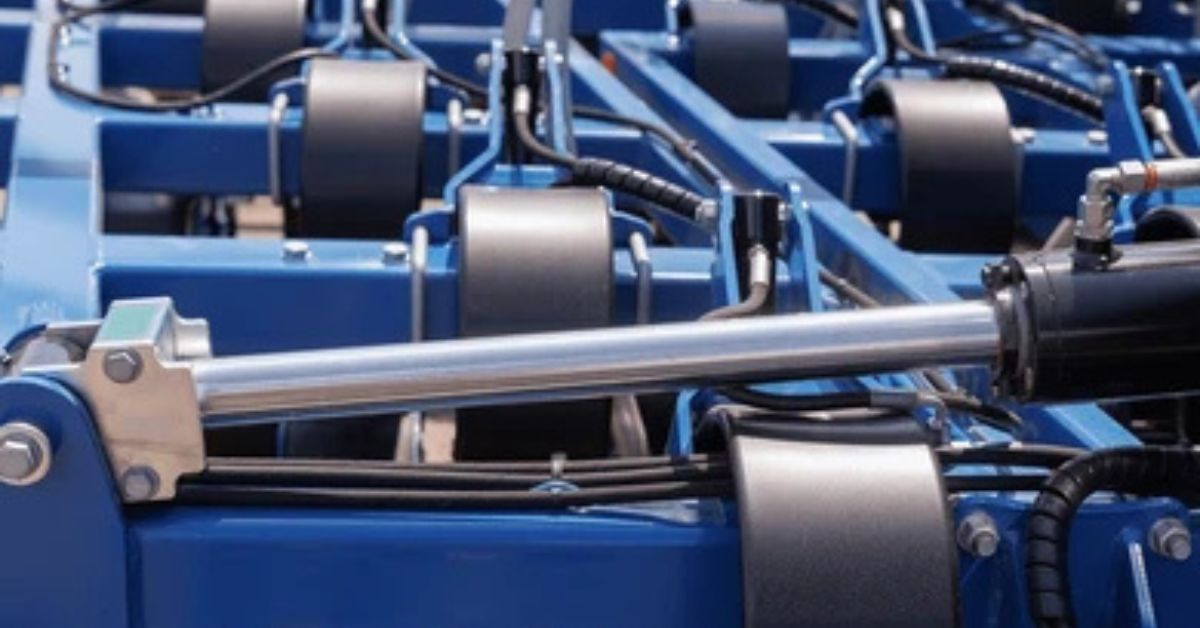Understanding Single Acting Cylinders: Function, Types, and Applications
In the world of hydraulics and pneumatics, cylinders play a crucial role in converting energy into mechanical motion. One of the most commonly used types of cylinders in various industries is the single acting cylinder. This article will explore the function, design, types, advantages, and applications of it, helping readers understand their importance and uses in different systems.
What is a Single Acting Cylinder?
A single acting cylinders is a type of linear actuator that uses fluid (hydraulic or pneumatic) to move a piston in one direction. The key feature of this type of cylinder is that it operates using pressure to extend the piston, while the return stroke is achieved through a spring or gravity. In other words, the force to retract the piston comes from an external mechanism rather than fluid pressure.
This type of cylinder contrasts with a double acting cylinder, which requires fluid pressure for both the extension and retraction of the piston. Single acting cylinders are simpler in design, making them ideal for applications where only one directional movement is needed.
Components of a Single Acting Cylinders
The basic components of a single acting cylinders include the following:
- Cylinder Tube: This is the main body of the cylinder, usually made from steel or aluminum. It houses the piston and the piston rod, and it contains the fluid that powers the movement.
- Piston: The piston inside the cylinder separates the fluid chambers and moves in response to pressure. It converts the energy of the fluid into linear motion.
- Piston Rod: The piston rod connects the piston to the external mechanism that uses the linear motion. It extends out of the cylinder when the piston moves.
- End Caps: These caps seal the ends of the cylinder, preventing the fluid from leaking out while also allowing for the attachment of the piston rod or other connections.
- Spring (for return stroke): In single acting cylinders, the return stroke is usually powered by a spring, which is compressed during the extension phase and then expanded to push the piston back to its starting position.
- Ports: These are openings where the fluid enters and exits the cylinder. In a single acting cylinders, there is typically only one fluid inlet, as the return stroke relies on the spring.
How Does a Single Acting Cylinders Work?
The operation of a single acting cylinders is quite straightforward. The fluid (usually hydraulic oil or compressed air) enters the cylinder through the inlet port, which pushes the piston in one direction, typically to extend the piston rod. As the piston moves, the fluid pressure in the chamber is reduced.
Once the piston has fully extended, the fluid is no longer needed for the return stroke. Instead, the spring inside the cylinder takes over, pushing the piston back to its original position. This return process is typically slower than the extension phase, as the spring provides a controlled, less forceful motion.
Single acting cylinders are efficient in situations where the movement in one direction is more important than the return movement. The simplicity of their design makes them both cost-effective and low-maintenance.
Types of Single Acting Cylinders
Single acting cylinders can be categorized based on the nature of their applications and their internal design. The most common types include:
- Spring Return Single Acting Cylinder: As mentioned earlier, this is the most common type of single acting cylinder, where a spring assists in the return of the piston. It is typically used in applications where minimal force is required for retraction and where the cylinder’s return is not critical to the operation.
- Gravity Return Single Acting Cylinder: In some applications, gravity is used to return the piston. This type of cylinder is often seen in situations where the piston is extended by fluid pressure and the return stroke is assisted by the downward pull of gravity. For example, some types of lift gates or presses might use gravity return single acting cylinders.
- Air or Hydraulic Single Acting Cylinders: These cylinders use either compressed air (pneumatic) or hydraulic fluid (hydraulic) to power the piston extension. Both types work similarly, though the air-powered cylinders tend to be faster and easier to maintain compared to their hydraulic counterparts, which offer higher force capabilities.
- Telescopic Single Acting Cylinder: These cylinders are designed with a multi-stage piston rod that extends in a telescopic manner. This allows for a longer stroke in a shorter overall length. They are often used in applications where compact space is crucial but a longer reach is needed, such as in dump trucks or hydraulic jacks.
Advantages of Single Acting Cylinders
Single acting cylinders offer a variety of benefits, making them an attractive choice for certain applications:
- Simplicity: The design of single acting cylinders is relatively simple, which makes them easier to manufacture and maintain. This simplicity results in lower overall costs.
- Cost-Effective: Because of their straightforward design, single acting cylinders are typically less expensive than their double acting counterparts. Their use of a spring or gravity for the return stroke reduces the need for complex control systems or multiple fluid pathways.
- Space Efficiency: Single acting cylinders are compact, especially when compared to double acting cylinders, making them ideal for applications where space is limited. Their design also requires fewer components, further enhancing their space-saving advantages.
- Lower Maintenance: With fewer parts and simpler mechanics, single acting cylinders tend to have fewer points of failure. This makes them easier to maintain over time and reduces the likelihood of costly repairs.
- Safety: Because single acting cylinders do not require fluid pressure for the return stroke, there is less risk of over-pressurization or system failure, contributing to safer operation in certain environments.
Applications of Single Acting Cylinders
Single acting cylinders are used in a variety of industries and applications where only one-direction movement is needed. Some of the most common uses include:
- Automotive and Transport: Single acting cylinders are often used in automotive jacks, car lifts, and loading docks. Their ability to extend and retract with minimal power makes them suitable for these applications, where they provide efficient, reliable movement for heavy loads.
- Material Handling: Many types of material handling equipment, such as conveyors, dump trucks, and lifts, rely on single acting cylinders to perform the necessary lifting and tilting functions. For example, a dump truck might use a single acting hydraulic cylinder to raise and lower its cargo bed.
- Presses and Clamps: In mechanical presses or clamping applications, single acting cylinders are used to exert force in one direction, such as for molding, stamping, or clamping parts into place. The simplicity of the design allows for consistent operation in high-volume manufacturing environments.
- Construction Equipment: Construction machinery like backhoes, cranes, and excavators often use single acting cylinders in their lifting arms or boom functions. The ability to extend the cylinder to lift materials, combined with gravity assisting the return stroke, makes these cylinders well-suited for demanding, heavy-duty applications.
- Agricultural Machinery: In the agricultural sector, single acting cylinders are found in equipment like plows, harvesters, and irrigation systems. They are used to extend the working parts of machinery, such as lifting and adjusting plow blades or opening irrigation gates.
- Industrial Equipment: Many industrial machines, including presses, lifts, and compactors, rely on it for movement. Their simplicity and reliability make them an ideal choice for systems where only one-direction motion is required, particularly in automated production lines.
Disadvantages of Single Acting Cylinders
While it have many advantages, there are some limitations that must be considered:
- Limited Stroke Control: Since the return stroke is powered by a spring or gravity, the retraction of the piston may not be as precise or controllable as in double acting cylinders. This could be a disadvantage in applications where precise, repeatable motion in both directions is required.
- Lower Force Output: The spring or gravity-powered return stroke may not provide as much force as the extension stroke. This can limit the cylinder’s overall performance, especially in heavy-duty applications where both extension and retraction require similar levels of force.
- Speed Control: its typically offer less control over the speed of the return stroke compared to double acting cylinders. If a specific retraction speed is required, additional mechanisms or controls may be needed, which can add complexity and cost.
Conclusion
Single acting cylinders are an essential component in many mechanical systems, providing an efficient and cost-effective solution for applications that require linear motion in one direction. With their simple design, ease of maintenance, and versatility, they are used in a wide range of industries, from automotive to construction. While they may have some limitations in terms of precision and force control, their advantages in cost, space, and safety make them an attractive choice for many applications. Understanding the role of single acting cylinders in various systems is essential for those working with hydraulic and pneumatic systems, ensuring that the right choice is made for the task at hand.







